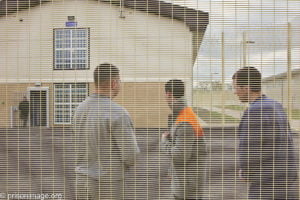Have you got anyone you can stay with?
Safe and stable housing is a critical factor in reducing reoffending rates for young people leaving custody. It
provides the foundations for a young person to rebuild their life and move forward into a positive future away from crime. However, many young custody leavers face severe challenges in accessing accommodation on release; a situation which can push them into homelessness, chaotic housing situations and reoffending.
That’s the central conclusion of a new report published by Centrepoint and Nacro based on interviews with young custody leavers aged 18 to 25, and interviews with the practitioners who support them across a range of agencies. The research was carried out in late 2017, before the implementation of the Homelessness Reduction Act (HRA) and before the clarification from Government that all young people under 21 who have secured accommodation would be able to claim housing costs through Universal Credit.
Their analysis highlights three thematic requirements and associated barriers which need to be addressed
to enable young people to access safe and secure accommodation on release from custody. While both organisations continue to call for a joined up, cross government Housing Strategy which meets the needs of vulnerable people, including young people that leave the criminal justice system each year, the report identifies some practical solutions, that if adopted in the current system could make a real difference to young people leaving custody and experiencing barriers to accessing safe and stable housing.

Findings
The report categorises its findings under three categories.
Young people leaving custody need the right preparation
- Young people leaving custody should have a resettlement plan to ensure that their housing needs are met and necessary services are in place prior to their release; however, many of the participants in the research reported that planning was insufficient and not done far enough ahead of their release to be effective.
- Disruptions such as transfers to different prisons during a sentence can hinder effective pre-release planning and mean that young people miss out on the engagement and support they need.
- Inconsistencies in joint working between prisons, community rehabilitation companies (CRC) and the National Probation Service (NPS) make it difficult to offer consistent pre- and post-release preparation and assistance. Practitioners also highlighted high workloads and insufficient resources as barriers to providing meaningful support.
- Young people in custody for short periods or recalled to custody may not have the opportunity to engage with housing and post-release planning, increasing the risk of poor housing outcomes and reoffending upon release.
- Home Detention Curfew (HDC) can ease the transition from custody, improve access to employment and training opportunities and assist resettlement in general. However, practitioners expressed concerns that some young people who would be eligible cannot access HDC because they do not have housing to go to or provide unsuitable home addresses.
Young people leaving custody need access to a safe and stable home with an ongoing support network
- Too many young people experience homelessness after leaving custody. Across Centrepoint’s accommodation, young custody leavers are almost twice as likely to have slept rough as those without experience with the prison system. This risks them turning to negative support networks and reoffending in order to secure a bed for the night.
- Historically some local housing authorities have not assessed young people until they have left custody, even though pre-release work with probation and rehabilitation services may begin months before. This means young people are only able to engage at a point of crisis, undermining efforts to prevent homelessness.
- Prior to the HRA some young custody leavers are seen as having made themselves ‘intentionally homeless’ by their local authority on the basis of having been convicted of a crime, and in general are not seen as being in priority need for homelessness assistance despite their vulnerability. The implementation of the HRA provides an opportunity to ensure this is no longer possible.
- While supported accommodation is often the most suitable option for young people leaving custody, proposed changes to funding may put services at risk, particularly those that support people without a statutory right to housing.
- The private rented sector is largely inaccessible for young custody leavers, with high upfront costs which are unaffordable for many prison leavers. Interviewees also highlighted landlords’ reluctance to let to young people in general and especially young custody leavers.
- Returning to the family is often a young person’s best accommodation option after leaving custody and the retention of family links throughout a sentence can decrease the chance of reoffending. However, this does not work for those young people who have come from an unstable family situation, and should not be assumed as the best option in every case.
Young people leaving custody need financial security
- Making a claim for Universal Credit can be difficult while in custody, where access to the internet and Jobcentre Plus work coaches is limited and inconsistent and where young people may not have the documentation they need to complete an application. However, these barriers are leading to unacceptable delays in receiving essential financial support after release.
- Lower entitlements to benefits make it much more difficult for custody leavers to access appropriate housing they can afford. The Shared Accommodation Rate (SAR) drastically limits the accommodation available and can force custody leavers into shared housing which may not be appropriate for their needs.
- The discharge grant someone receives when leaving prison has remained at £46 for over 15 years. For young custody leavers trying to make a fresh start whilst looking for employment or waiting for benefits to be processed, this amount is not enough for them to get back on their feet.
- Finding and sustaining employment is key to securing accommodation and reducing reoffending. The research highlights some innovative and effective training programmes, building in wraparound support around employment, but found that provision is inconsistent across the wider prison and probation estate.
- Criminal records present a major barrier for young custody leavers looking to access employment, with both employers and applicants unsure what legally needs to be disclosed.








